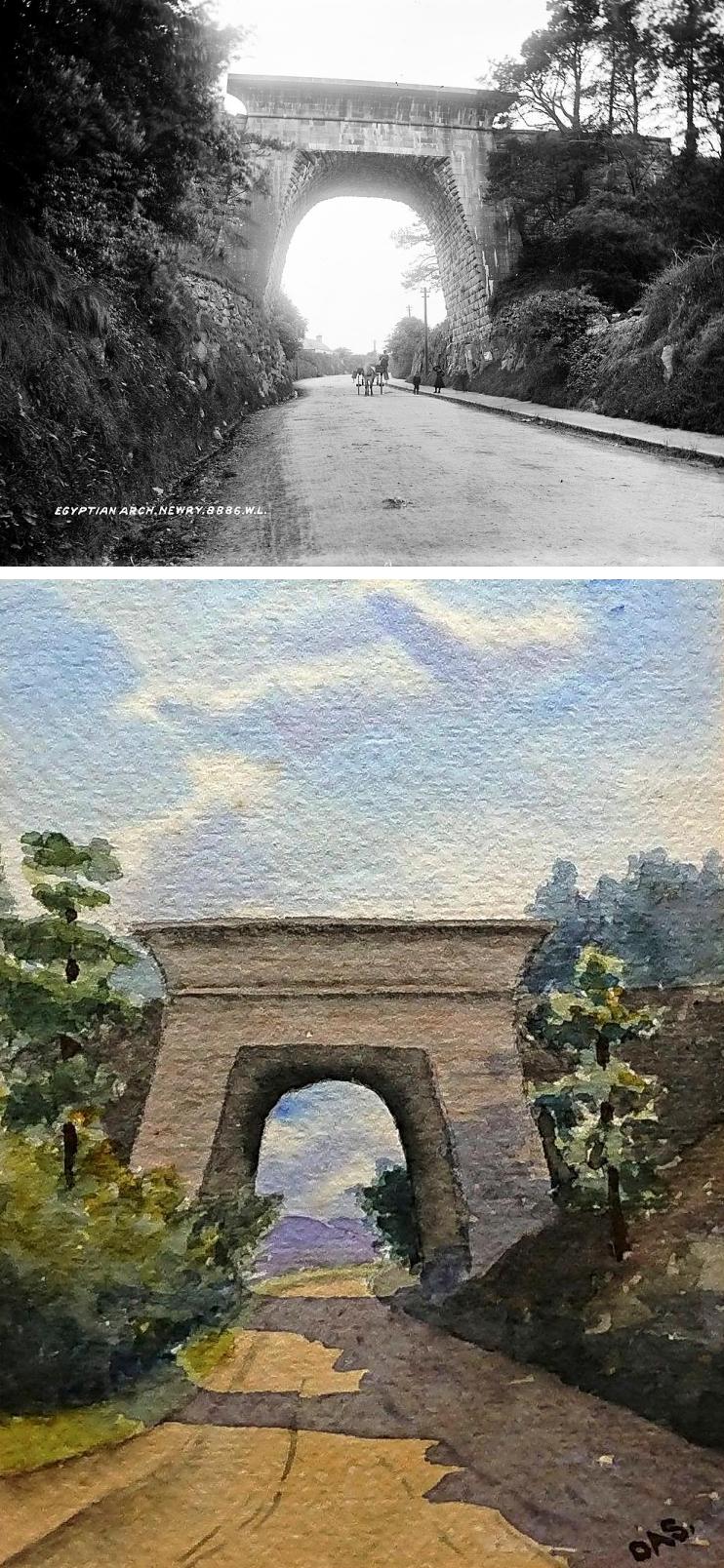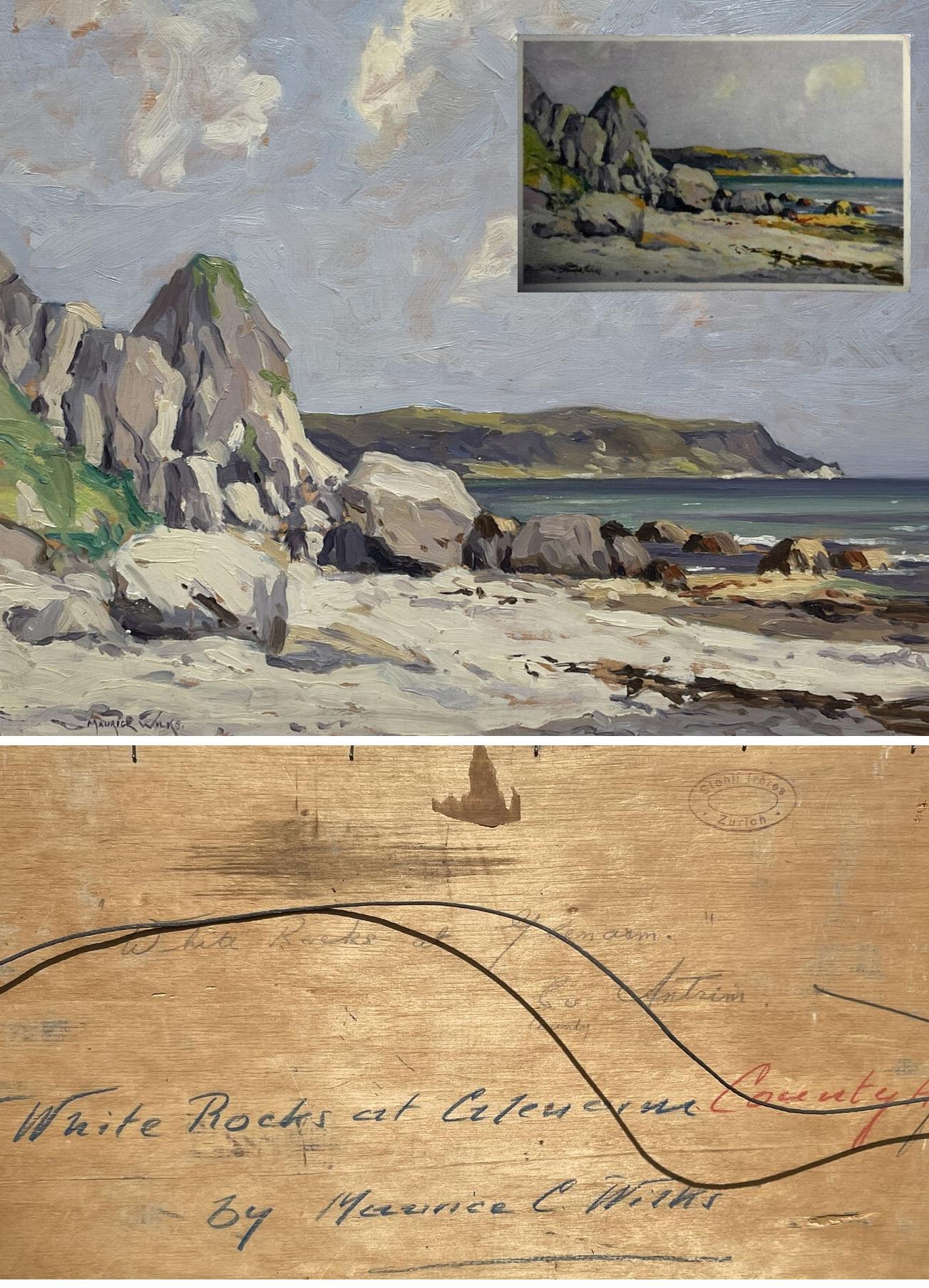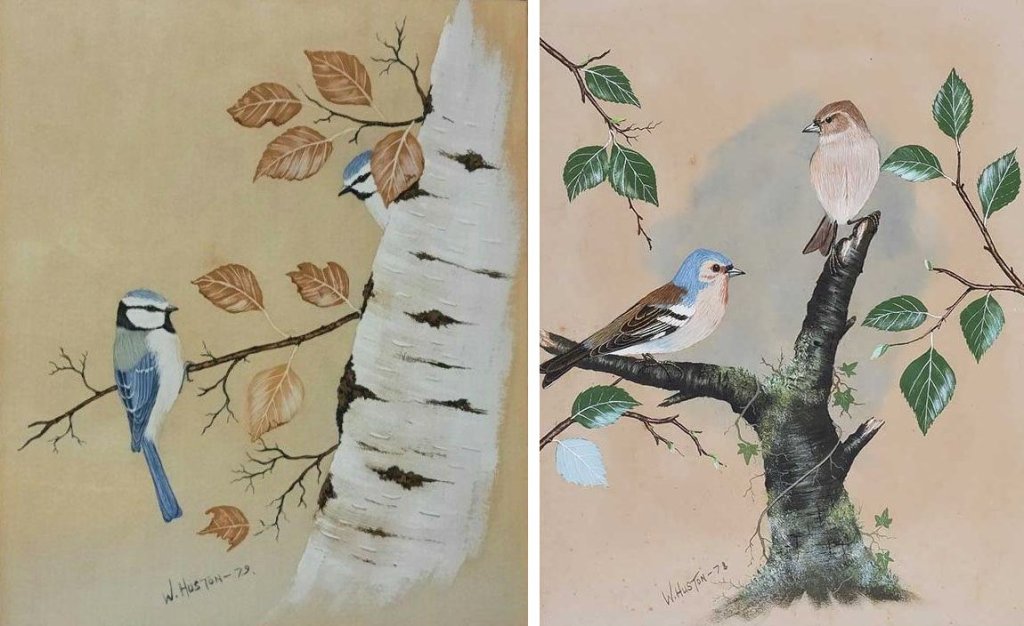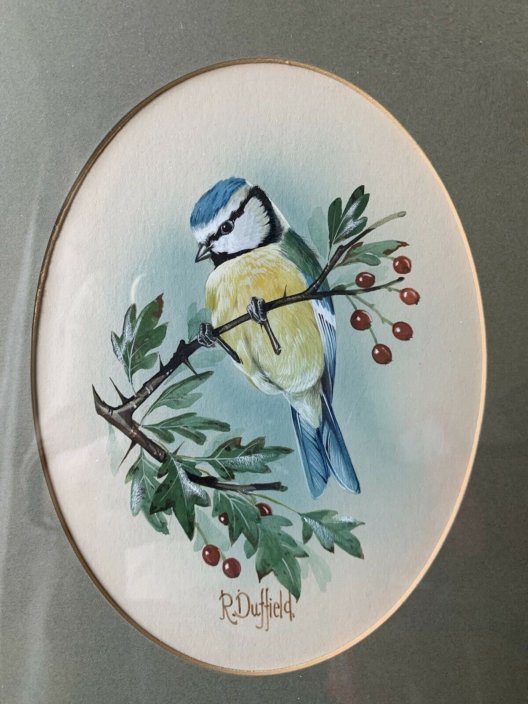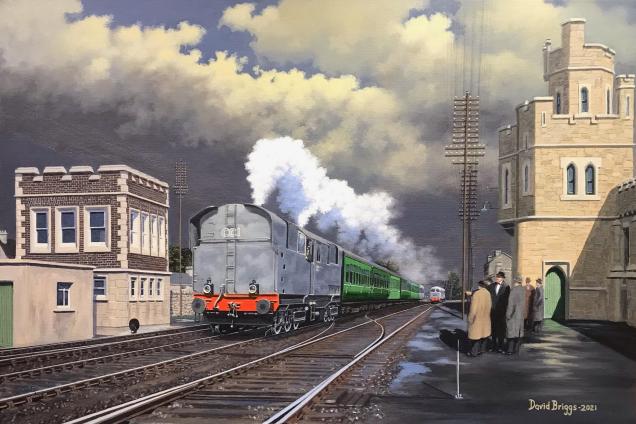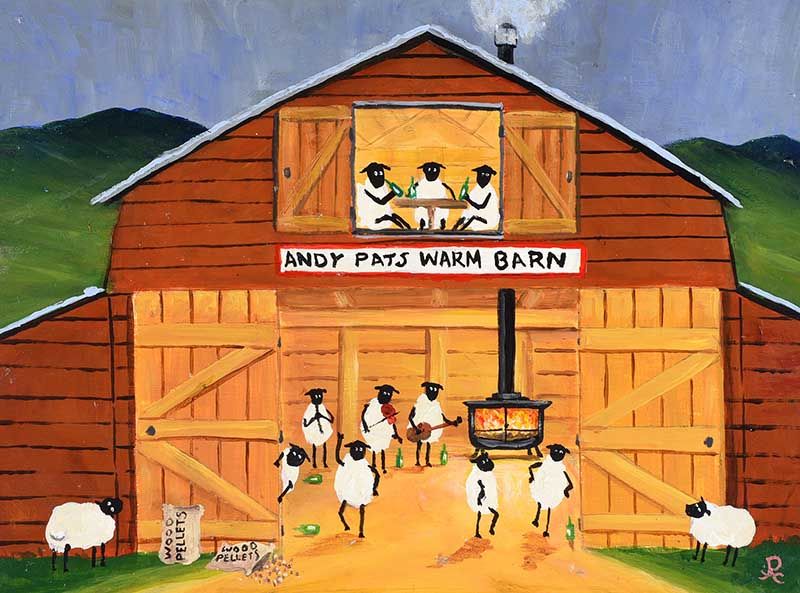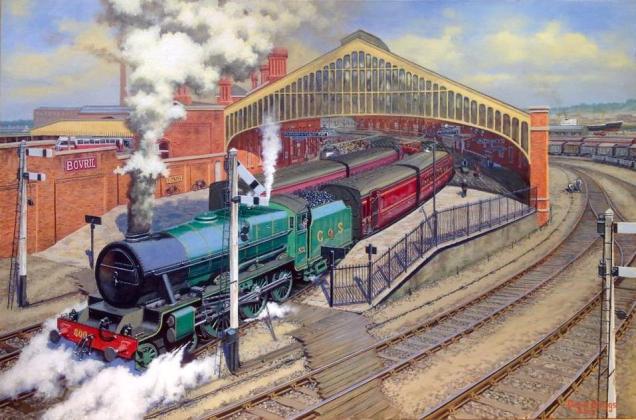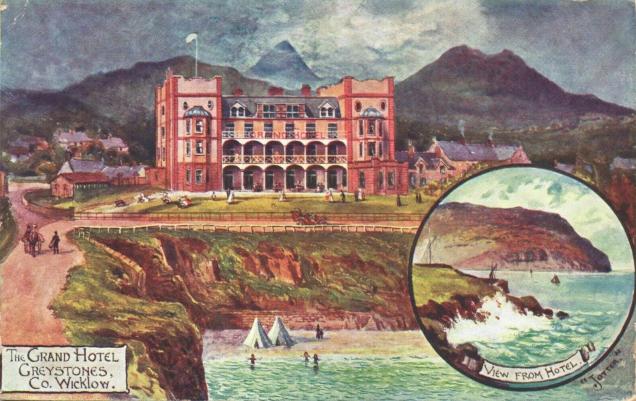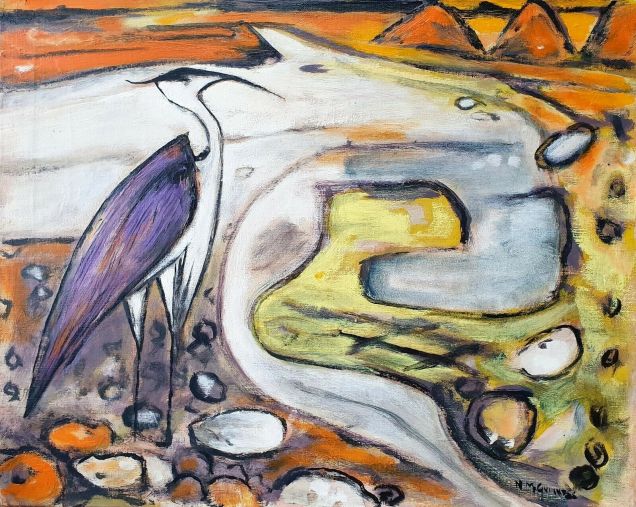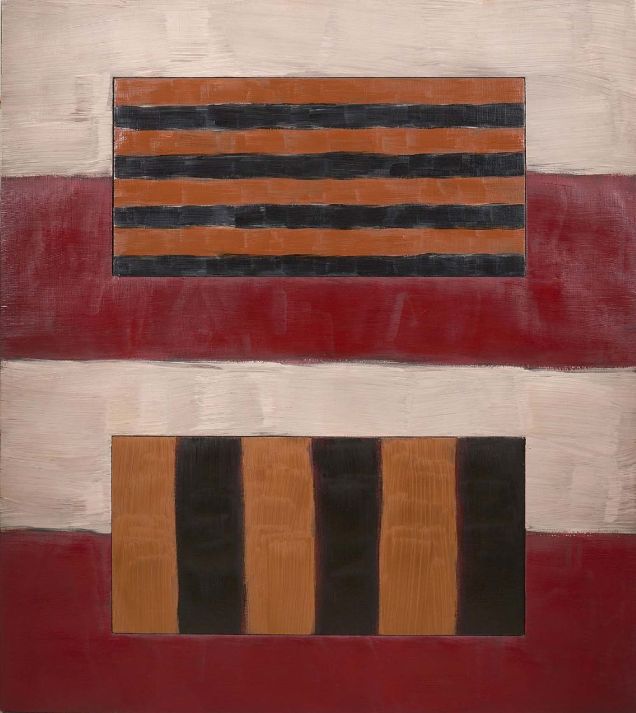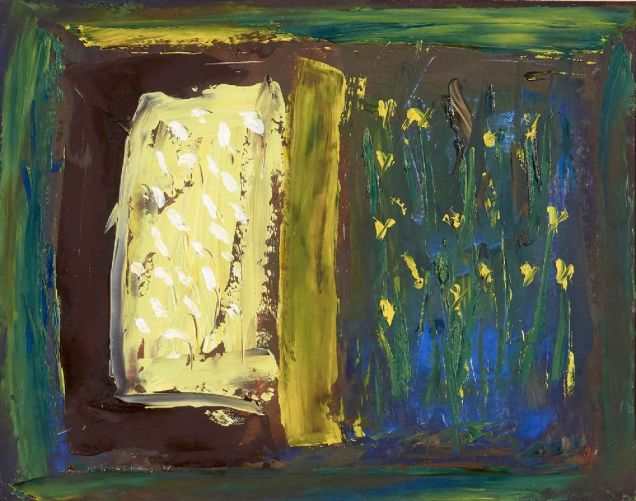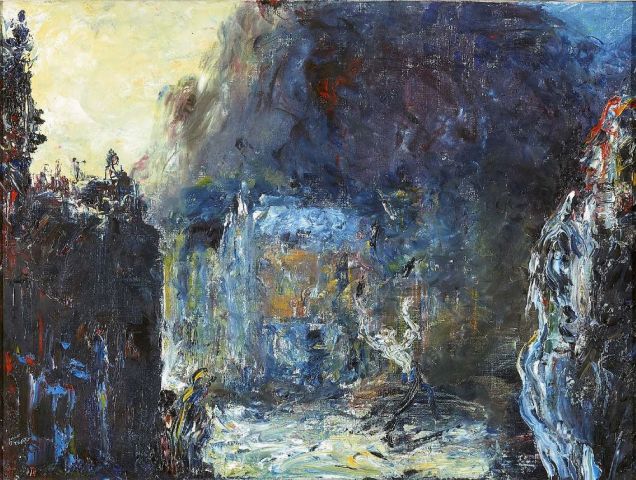Last week, after months of fruitless searching I found another work by Olive Adelaide Swanzy (OAS), this time quite by chance when I was just doing a routine trawl of Irish art listings on eBay. The painting was not attributed to any artist and the description – Irish Modern Art Watercolour Painting of a Road Culvert Signed – wouldn’t send one’s heart racing. I wouldn’t have bothered clicking on it at all only that the bridge in the small photograph had a familiar look about it. Sure enough, when enlarged it was no ordinary culvert bridge but Sir John Macneill’s magnificent ‘Egyptian Arch‘ which carries the Dublin/Belfast railway line near Newry.
Dating from 1851 the Egyptian Arch gained its name from its resemblance to the nemes headdress worn by Ancient Egyptian pharaohs. More recently, the bridge was selected for the design of the £1 coin to represent Northern Ireland for 2006. All four of the bridge design pound coins for each constituent part of the UK were designed by wood engraver Edwina Ellis in a Royal Mint design competition.
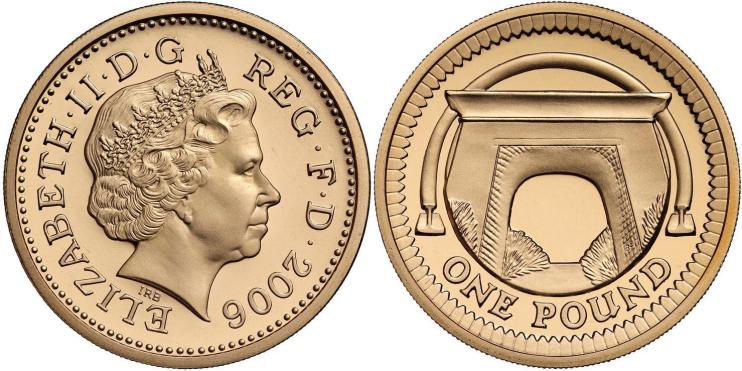
The painting, a watercolour drawing, is just (6″ x 4.5″) but worth every penny of the £30 it cost. The artist’s initials are present on the bottom right hand corner and, of course, the bridge is only a few miles from the artist’s home in Rostrevor.
Also not far from her home is the famous 50-ton granite boulder known as the “Cloughmore Stone“, an erratic left behind by a retreating glacier and a subject that she must have painted – I’ll keep searching…
My thanks to Steve Skerratt, Belfast, for his help with this acquisition.
